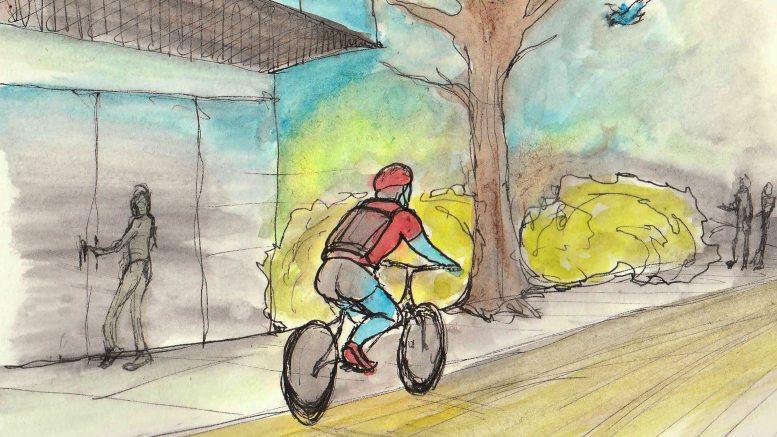Downtown Winnipeg has had its ups and downs, but the city’s current lack of initiative and vision in urban planning a nd development has resulted in its slow and consistent demise.
Developmentsbeing prioritized by Winnipeg’s planning commission such as 300 Main do not appear to take into account the potential benefits of certain projects for the surrounding community. Instead, many of these larger developments tend to focus on how large the profit margins are.
This is not to say that the profits in city planning are something to be overlooked— of course, money plays a significant role in outcomes like construction andoperating costs, but there is space to create a balance between renderedprofits and social integrity.
DowntownWinnipeg has more than enough high-end condos, empty heritage buildings andparking lots, among many other narrowly scoped developments. Why not try tointroduce developments that provide space for valuable amenities that wouldenable urban, non-motor-vehicle-oriented living? It’s a shame to see howunlivable our downtown is, ranging from issues such as the cost of living tolack of essential services like grocery stores. It may be shocking to mostWinnipeggers that their downtown remains radically underpopulated despiteconstant efforts to make it more attractive, but considering the lack of necessaryamenities coupled with inflated living costs, it should be expected.
Thelong-term goals of community-oriented planning have been timelessly proven towork in other major urban centres around the world. Why does Winnipeg feel theneed to over-complicate this approach?
Lookingbeyond Winnipeg, we should learn from other major cities. For example, Parishas successfully integrated the “15-minute city” plan — a design plan thatattempts to make all amenities required to live available at any point within a15-minute walking or biking radius. Additionally, other Canadian cities likeEdmonton, Alta. have taken strong initiative to develop a new set of guidelinesto synergize winter conditions rather than viewing them entirely as a nuisanceto urban planning and infrastructure. Needless to say, there’s certainly noshortage of exemplary urban planning strategies for Winnipeg to emulate.
Winnipegshould strive for accessible living of all types. Whether it be single orfamily living, our downtown should be able to accommodate residents at thebarest of minimums. Further, Winnipeg should seek to build a stronger sense ofcharacter and consistency in our urban identity and provide a more meaningfulexecution of communal programming that works with our seasonal variation.Ultimately, we need to redefine Winnipeg.
Thatbeing said, the primary issue with improving the density of Winnipeg’s downtownis not a theoretical oversight — instead, it is a political shortcoming.
Urbandesigners, politicians and developers, among many other key figures, are wellaware of what needs to be done, but there’s simply no incentive to addressthese issues. For example, if an owner of a surface parking lot in the downtownarea is already making a sizable income from their business venture, whatreason would they have to cut off that income and develop the land overmultiple years? Sure, in time the development would harness a modest income ifit proved to be successful, but if there is no incentive or immediate benefitto pursue such a venture, what reason would they have to take the risk?Intervening at this level is where the city would benefit most.
Ourmunicipal, provincial and federal governments should offer more beneficialgrants and incentives to develop sustainably and effectively. Although theurban environment is used by the general public, it shouldn’t be their entireresponsibility to ensure its successful development. There needs to be morethoughtful administration involved.
The downtown dilemma of developingprojects with a lasting impact versus a quick start-up that lines developers’pockets with easy money always tends to veer toward the latter approach. Thisshort-term thinking may appear bold and look good for those involved in themoment, but how will developing gentrified monstrosities that very few peoplecan afford to live in hold up in the long run? We need to start thinking of the“long now” and provide an adaptable approach for future generations to thrivein.


